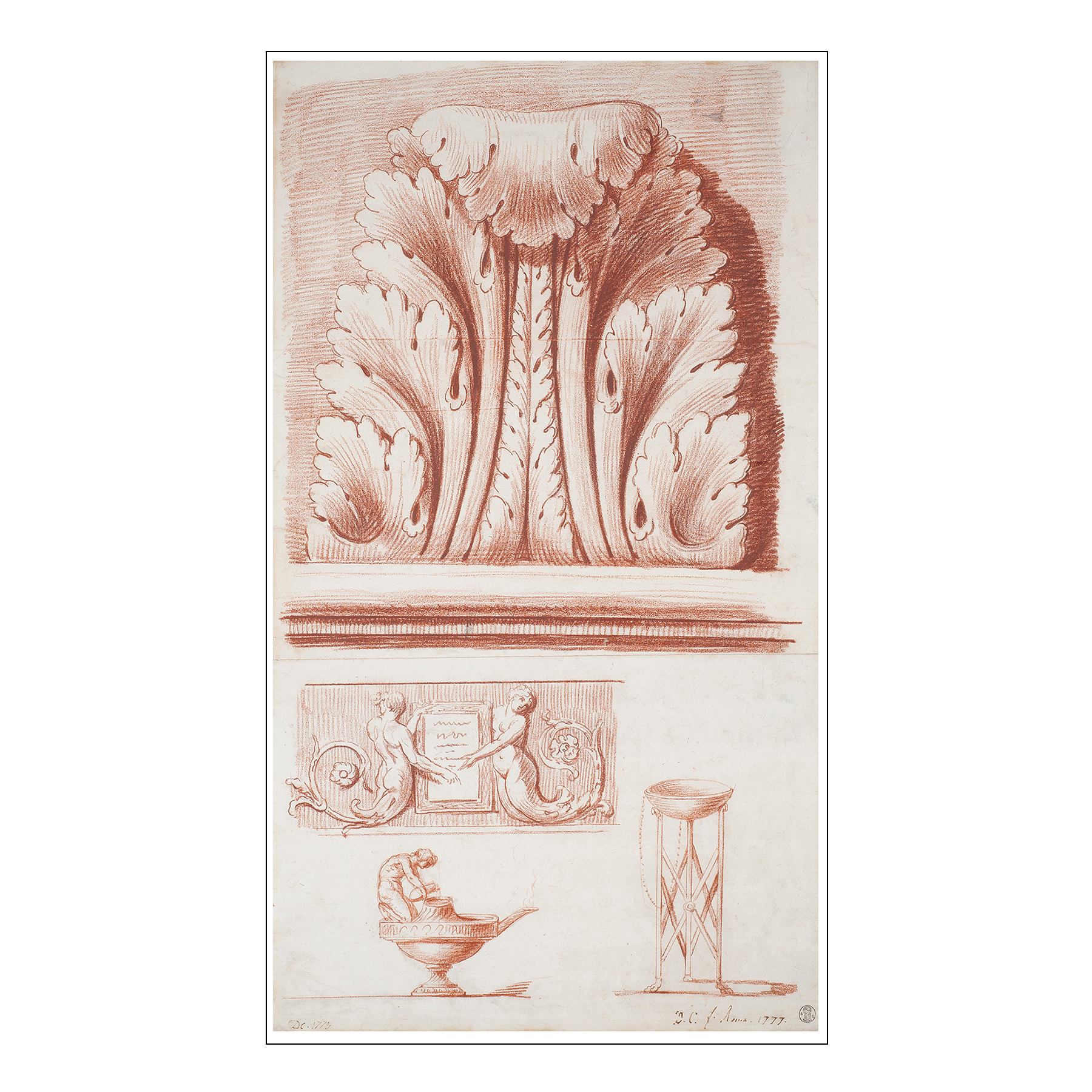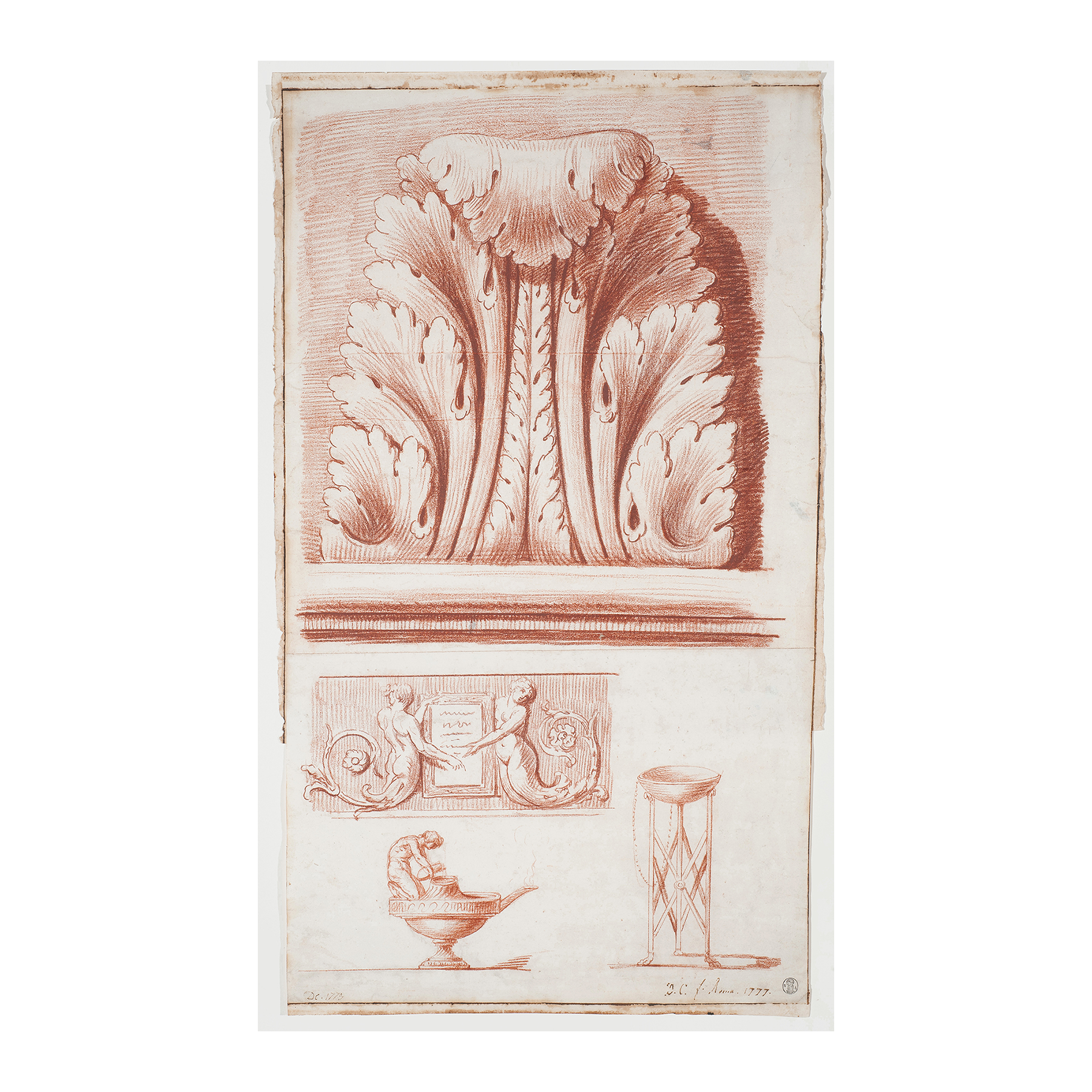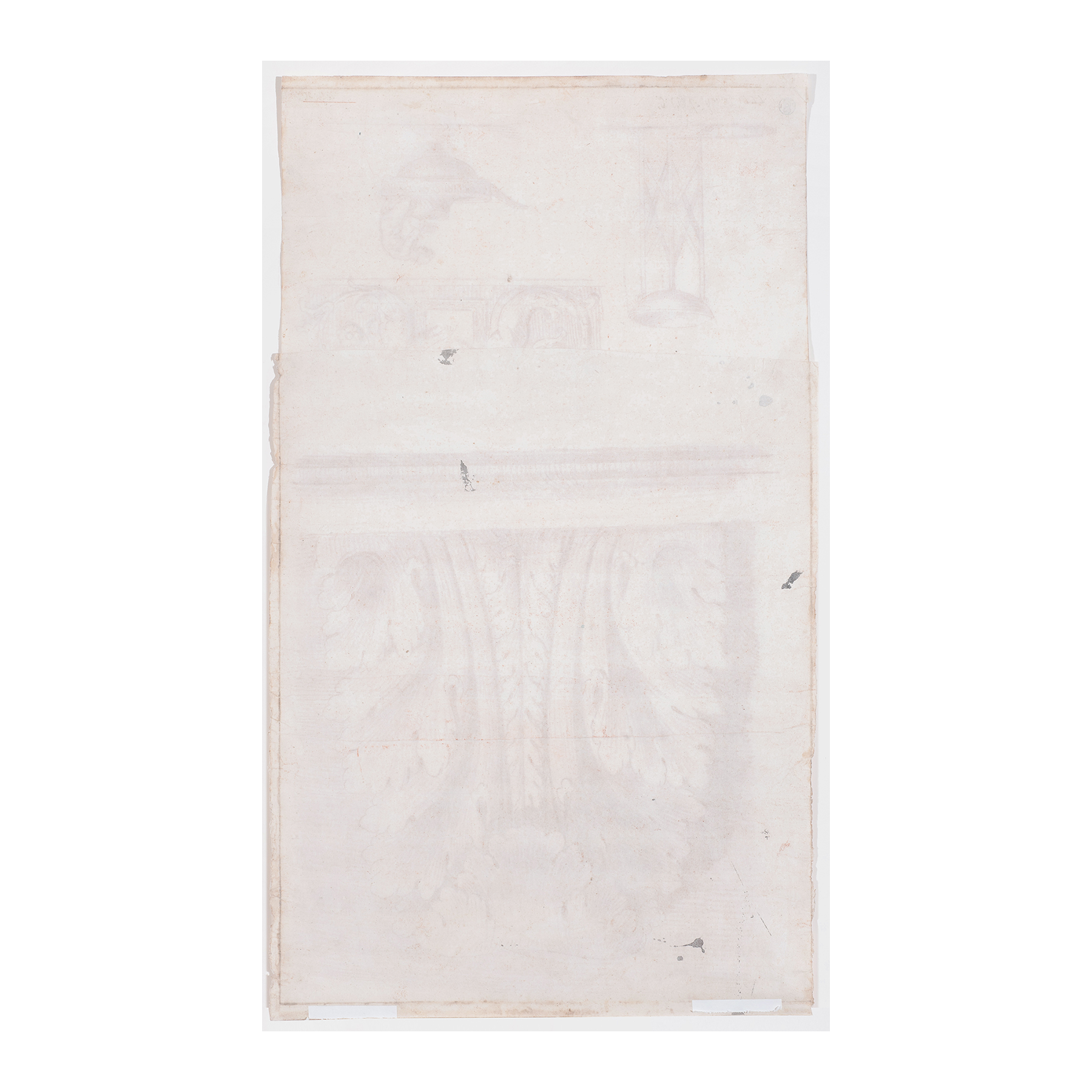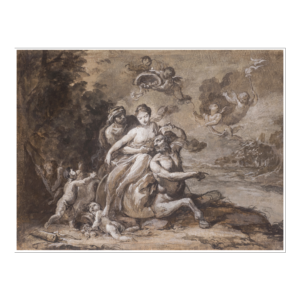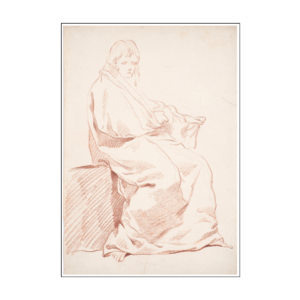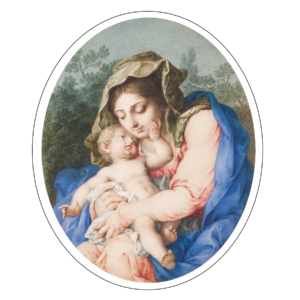Jean-Baptiste Marc-Antoine Descamps
Rouen 1742 – 1836
Studies of Antique decorative elements: acanthus leaves, ornamental frieze, oil lamp and tripod
Inscribed lower left D. C. f Roma 1777 and on the left DC 1773.
Red chalk.
535 x 310 mm – 21 1/16x 12 3/16 in.
Provenance – Nikos Dhikeos, his stamp lower right (L. 3529).
Jean-Baptiste Marc-Antoine was the son of Jean-Baptiste Descamps (Dunkerque 1714 – Rouen 1791), a painter who created the first drawing school in Rouen in 1740. Marc-Antoine won the first prize of drawing « d’après bosse » [after a sculpture] in 1759 and the first prize of drawing “d’après nature” [on the motif] in 1763. After training with his father, he sought to perfect his education first in Paris, then in Rome, where he stayed from 1773 to 1777. During his stay in Italy, in 1775, he was elected a member of the Académie des Sciences, Belles-Lettres et Arts of Rouen. Back in France, he collaborated with his father and took over from him as the Director of the Rouen School of Drawing and Painting in 1791. Appointed Curator of the Museum of Paintings in Rouen in 1809, he is the author of the first catalog of its collection (Théodore Lebreton, Biographie rouennaise : recueil de notices biographiques et bibliographiques, Rouen, éd. Le Brument, 1865, p. 101-102).
This large and impressive sheet of studies of ornamental and ancient objects can be compared to a group of drawings bearing the same inscription D.C. f. Roma. Two sheets dated 1776 are in the Berlin Kunstbibliothek (Hdz 6448 et Hdz 6449), while another, dated 1777, is in the St-Petersburg Hermitage (inv. 288040). These drawings were formerly connected with the red chalk drawings of the sculptor Gilles-Paul Cauvet (1731-1788), who published in 1777 a pedagogical handbook Recueil d’ornements à l’usage des jeunes artistes qui se destinent à la décoration des bâtiments. They have eventually been attributed with certainty to Jean-Baptiste Marc-Antoine Descamps thanks to the apparition of the Study of a Seeping Young Woman inscribed with the same handwriting and bearing the complete name of the artist Descamps fils f. R. 1777 (Sotheby’s, London, 4 July 2018, lot 85). The fact that the artist was still in Rome in 1777 is supported by his article Notices faites par M. Descamps à Rome en 1777 published in Précis de l’Académie in 1822, p. 95 (Cf. site rouen-histoire.com).
Condition report – Traces of glue on the edges. Two assembled sheets of paper. A few creases. Stains on the verso. Irregular edges.
